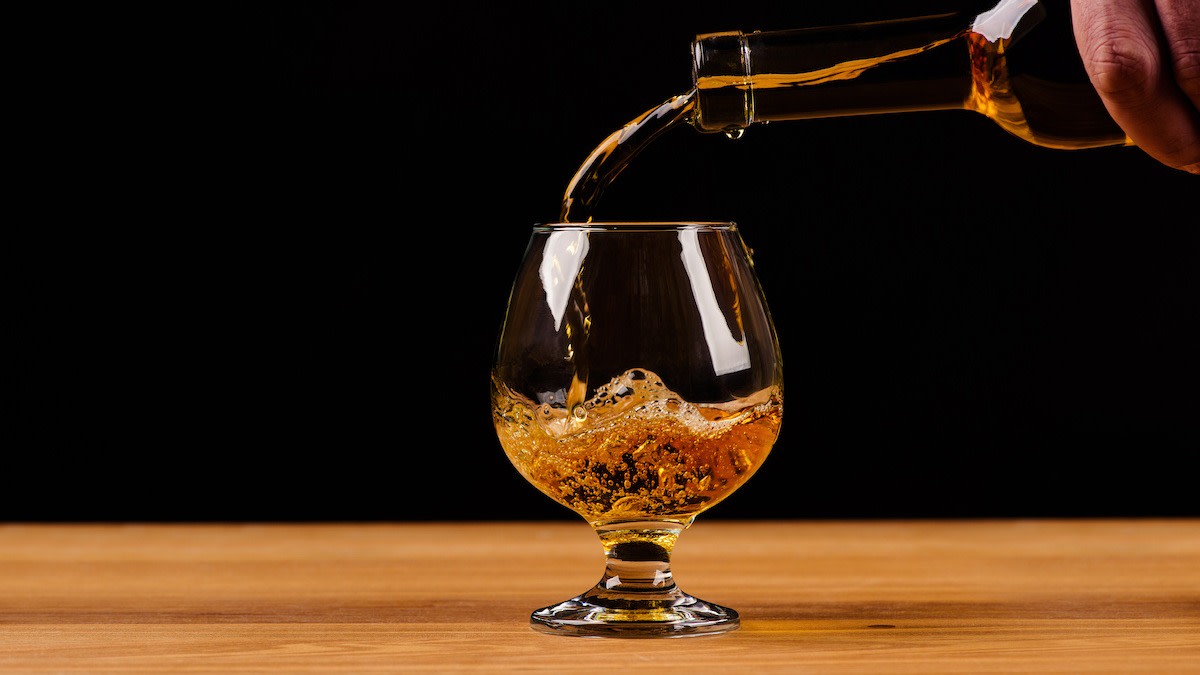Guide to Traditional Amontillado Sherry
Written by MasterClass
Last updated: Jun 7, 2021 • 4 min read
Memorialized by Edgar Allen Poe in his short story "The Cask of Amontillado," this aged dry sherry has a fascinating production process.
Learn From the Best
What Is Amontillado?
Amontillado is a type of dry sherry made via a multi-step aging process that turns the fortified wine an amber color and imbues it with a nutty flavor. The name Amontillado means "like Montilla," after the Spanish wine zone of Montilla-Moriles near Andalucía.
Ironically, though, Montilla-Moriles does produce Amontillado-style aged wines, it is not one of the three regions in southern Spain that can legally produce sherry. Those three regions are Jerez de la Frontera, Sanlúcar de Barrameda, and El Puerto de Santa María. Aged wines made in those regions receive the official Jerez-Xérès-Sherry label (Xérès and “Sherry” are the French and English versions of the Spanish word Jerez, respectively). Jerez and Sanlúcar are particularly known for their high-quality Amontillados.
How Is Amontillado Produced?
The traditional process for making Amontillado sherry requires precision and care.
- 1. Grape selection: True Amontillado starts with palomino grapes, which are typically harvested in early September. Winemakers select the best grapes from the oldest vines for Amontillado production. They use the lower-quality grapes to produce Oloroso, a rich sherry that has been fortified to 18 percent alcohol.
- 2. Fermentation: The grapes are destemmed, pressed into juice, and fermented in steel vats. Near the end of fermentation, the wine is fortified to 15 to 15.5 percent alcohol with the addition of a grape spirit such as brandy, typically produced at the same bodega (winery) where the sherry wine is made.
- 3. Aging: The fortified wine is then left to age in wooden casks, at which time a layer of flor, a thick yeast that can survive only at alcohol levels of 14.5 to 16 percent, forms on the surface of the wine. The cask is essential because it allows water to evaporate through the wood during the aging process. Flor protects the wine from oxidation and adds a characteristic flavor. The thickness of the layer of flor varies according to climate and can create subtle differences between sherries. This process produces Fino sherry (from Jerez) or Manzanilla sherry (from Sanlúcar), the youngest, lightest, and driest forms of Sherry.
- 4. Fortification: To make Amontillado sherry, Fino or Manzanilla sherry is further fortified to 16 percent alcohol content, which causes the flor to die. The wine is exposed to oxygen and aged again, which gives it an amber color and a rich, nutty flavor.
- 5. Blending: Amontillados, like other styles of sherry, are often aged via the solera system, which involves blending together small amounts of aged sherry. True Amontillado is completely dry, but to produce a medium-dry wine, some producers add Pedro Ximénez, a naturally high-alcohol wine that comes from the very sweet grapes of the same name. Most commercial Amontillado is not produced in the traditional method. Commercial Amontillados are often a blend of Oloroso sherry and lower-quality sweet sherry, plus added sweeteners.
Palo cortado is a rare style of sherry that forms when wine selected for Fino production fails to produce its layer of flor. This causes premature oxidation, and the wine becomes darker and fuller-bodied than Amontillado, but not quite as strong as Oloroso sherry.
7 Characteristics of Traditional Amontillado
True Amontillado sherry is:
- 1. Light honey to dark amber in color.
- 2. 16 to 22 percent alcohol by volume.
- 3. Rich and nutty in flavor.
- 4. Completely dry, with less than one gram of sugar per liter.
- 5. Light—richer than Fino sherry but lighter than Oloroso
- 6. Free from the added sweeteners that are typical in cream sherry or commercial Amontillado.
- 7. Aged at least two years. VOS (Very Old Sherry/Vinum Optimum Signatum) is made with wines averaging 20 or more years of age and VORS (Very Old and Rare Sherry/Vinum Optimum Rare Signatum) is made with wines averaging at least 30 years of age.
What Does Amontillado Taste Like?
Amontillado is dry with a rich, complex flavor. Common tasting notes include:
- Nutty aromas, such as hazelnut
- Herbs and spices
- Tobacco
- Dried fruit
- Caramel
- Salty, like the sea air
- Woody aftertaste
How to Serve Amontillado: 6 Dishes to Pair With Amontillado
Serve Amontillado slightly chilled (between 54 and 57°F) in a white wine glass. Amontillado is a great style of sherry to serve as an aperitif or with tapas such as nuts, hard cheese, and cured meats, as well as seafood, including oysters, sardines, and mackerel. Try pairing Amontillado with:
- 1. Chef Wolfgang Puck’s Oatmeal Risotto
- 2. Chef Gabriela Cámara's Tuna Tostada Recipe
- 3. Chef Gordon Ramsay’s Charred Cauliflower Steak With Olive Pistou and Porcini Mushrooms
- 4. Chef Gordon Ramsay's Sautéed Asparagus
- 5. Chef Thomas Keller's Perfect Oven Roasted Chicken
- 6. Chef Thomas Keller's Braised Artichokes
Learn More
Want to learn more about the culinary arts? The MasterClass Annual Membership provides exclusive video lessons from master chefs and wine critics, including James Suckling, Chef Thomas Keller, Gordon Ramsay, Massimo Bottura, Alice Waters, and more.
